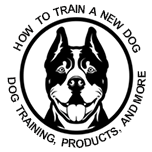Dog Discipline – Correcting Undesirable Behaviors
Dog discipline is a difficult subject for many dog owners. Dog owners are constantly searching for ways to discipline their dogs when in reality, all their dogs need is to be motivated to learn. There are, believe it or not, many searches done online for how to spank dogs. Spanking or physically hitting dogs is never a good idea, counterproductive, and in many cases causes fear-based behaviors which can result in a dog that is unsocial and withdrawn. Dogs that are abused rarely recover from the emotional scars of their mistreatment and end up being dumped in shelters and a good deal of times euthanized.
So, how do you discipline your dog? Some dog owners don’t believe that any kind of correction is necessary, however, it is. A dog needs to understand that undesirable behavior will not be tolerated.
Dog Discipline: Understanding Why a Dog Misbehaves
When a dog is behaving inconsistently, usually it isn’t because they are acting out, it is because they are not sufficiently trained in the behavior you want them to be trained in. Keep this in mind if you feel yourself becoming angry at your dog. If you haven’t had the time to train your dog, don’t blame your dog. Keep in mind that when your dog is not been trained, scolding or becoming angry, yelling, spraying water, or spanking your dog will only confuse and frighten your dog.
Quick Steps to Help you without using Discipline and Correct Frustrating Behaviors in Your Dog:
- First and foremost, train your dog in the basic commands which are sit, stay, heel, and come. Dogs that are trained, naturally tend to act out (and misbehave) less.
- Repetition and daily retraining. Retrain your dog every day. Even 5 minutes of retraining can refocus your dog on learning the desired behavior.
- Refocus and try your commands in a calm voice. A calm voice will not induce a fear-based reaction in some dogs. Try and avoid the emotions that go along with a frustrating training session or a frustrating behavior when you are training your companion. A calm voice should always be used to teach your dog to recognize desired behaviors or commands you want him to learn.
- Don’t overwhelm your dog by trying to teach him multiple commands, and all at once. Teach one command at a time until it is thoroughly learned. Don’t expect your dog to learn or be trained in a short amount of time. Try training sessions that only last 15 minutes at a time.
- Be patient. Don’t blame your dog for misbehaving. Own up to the responsibility of training your dog.
Dog Discipline: What if you Don’t Have the Time to Train Your Dog or Aren’t Sure How?:
- Try clicker training. Generally, you can clicker train a puppy or dog faster than conventional verbal or hand signals alone.
- Hire a trainer.
- Although I do not agree with all of the training methods – If you can only spare weekends and can’t afford a trainer, try a local pet supermarket and sign up for those classes.
- Go online and read. Download a Kindle Book, or research the fastest and most effective ways to train your dog.
- Not all training videos are suitable – however, if you can, find a reputable trainer and watch videos by that trainer.
The Best Dog Discipline?
- Training your dog, first and foremost. And correcting your dog when undesired behaviors occur, immediately. Saying “No!”, when your dog misbehaves, but not in an angry, unsteady tone, and not scolding. Consistency when giving commands is crucial to your dog’s learning. After a time, consistently saying “No!” teaches the dog that the behavior will not be tolerated and the behavior will stop. Dog owners often think this phrase doesn’t work; usually, because they have not said or used it enough times. Any command takes time to learn and “No!” is just another command the dog needs to learn in order for it to be effective.
- Use your leash. Leave the leash on your dog during training and in your home. Using it in conjunction with the word No! is very effective when done consistently. Just a quick, gentle tug (not hard pulling or choking) can discourage the most difficult of dogs from misbehaving by literally redirecting their attention back to you. The leash also works well to retrain your dog to obey your commands, so it is a good idea to always keep it handy.
Dog Discipline – Aggressive Dogs:
If your dog is aggressive or has bitten or nipped you, your family, or someone else, aggression is a behavior that needs to be addressed right away and it is very serious.
- Your dog needs to be kept either indoors or outdoors, always in a restricted area, which means escape-proof, no exceptions. You are liable for a dog that runs away or bites someone.
- When your dog is around people, he should always be muzzled, with no exceptions. You should also be muzzling your dog even if he can walk calmly and without lunging at someone. If your dog lunges, get a harness to stop it immediately.
- Don’t take an aggressive dog to parks, beaches, or anywhere large groups of people or other dogs are. The stress of taking your dog to those kinds of areas can actually invoke fear-based behaviors that in turn can make him even more aggressive.
- Consider hiring a trainer or getting a training collar as a last resort. Training collars have been proven to work quickly on aggression issues, however, it will take additional training on your part.
Dog discipline is a necessary part of dog training. Just remember that you need to train your dog. A trained dog is less likely to act out and needs to be disciplined.

